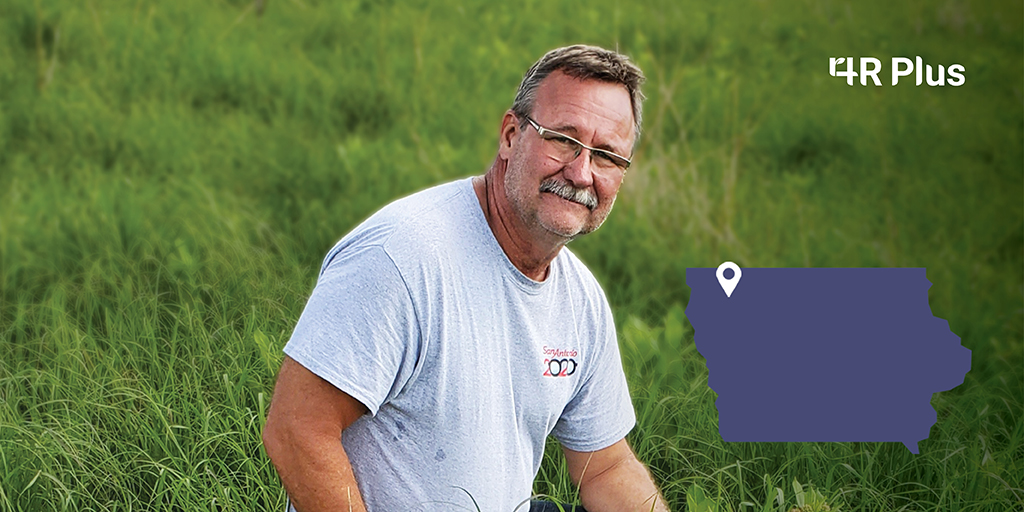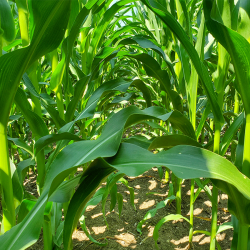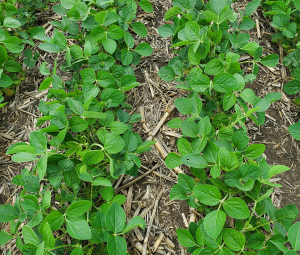
Kelly Nieuwenhuis has seen drought conditions intensify through the growing season in O’Brien County, but says the crops are holding their own on his good ground. He attributed building organic matter using 4R Plus practices, like one-pass vertical tillage, as improving the water-holding capacity of the soil, which makes a difference in a year like 2021.
“Since the first of April through mid-July, we’ve had farms that have only received 2.9 inches of rain. But the highest one is over 5 inches total,” he said. “That’s a spread of 2 inches to 3 inches during the growing season, so it’s very variable.”

Despite a good planting season and tremendous root development on his corn, if he doesn’t see timely rain in August, grain fill will be disappointing. “If we’re at 95 degrees and windy with no moisture, that’s a blast furnace, and we’re not going to produce much of a crop,” he said. “Those are the days that do the damage.”
But Nieuwenhuis is still optimistic that some of his farms have the potential for 200-bushel-per-acre corn. “Our soil types and reduced tillage help us when it’s dry,” he said. “The corn has really good color, so it’s into the fertility. The herbicides on the corn worked perfectly.
“However, the week we should have been spraying soybeans it was 95 degrees and windy,” he added. “We waited for the right conditions, but the weeds had another week to grow. And weed size is critical. I think we probably got 90% kill on the weeds.”
Nieuwenhuis talked to agronomists and learned he was not alone when it came to weed control in soybeans this year. “It didn’t matter what you used; it was the weather conditions. The plants were shutting down because of no moisture,” he added.
A beautiful spring planting season

Nieuwenhuis didn’t get much rain last fall but had 36 inches of snow. The cornstalk residue kept the snow in place, which absorbed moisture, insulated the ground and helped the crops get off to a decent start.
He was done planting corn by April 29 and started beans the same day. “It was a beautiful planting season. We were planting in the dust,” he said. “But I don’t expect our bins to bust this year. We will be thankful for what we get.”
Emergence was good thanks to soil moisture and organic matter, which he’s been working to increase since he began farming 39 years ago.
In contrast, “I know some people who do more full tillage, working the soil down 4 inches to 6 inches and it dried out a little deeper,” Nieuwenhuis added. “That caused a lot of uneven emergence.”
He uses planting technology that tells him the moisture percentage, soil temperature, organic matter and trash levels in his fields. “One thing we noticed was that our soil temps would go from the upper 40s in the morning to low 70s by the end of the day,” he said. “And that was at a planting depth of 2.5 inches. I was surprised it fluctuated that much during a 24-hour period.”
Experimenting with cover crops this fall
After talking with friends in eastern Iowa who have been planting cover crops for years, Nieuwenhuis is ready to get his feet wet. “The plan is to try it on a few acres and see how it goes. While most of our farms are flat, with heavy, clay-based soils, I have a couple of farms on rolling, lighter ground. Those are the ones I’m going to try cover crops on this fall, and no-till next spring,” he said.
He’s going to spread the seed on cornstalks. “We use a chopping head, which cuts up the residue pretty good,” he added. “If we get any moisture this fall, the cover crop seed is going to grow.”
Nieuwenhuis watched a neighbor try cover crops last fall. “He didn’t get much growth last fall or winter, but this spring, it germinated at 40 degrees and his fields greened up in late March. It grew about 6 inches and he terminated it, then planted. That’s what we’re going to try.”
He said cover crops have to be economical to be sustainable, and that’s why he’s going to start on just a few acres. “I’m excited about our fall cover crop plan,” he said. “We will get started at the ground level, get some research done, see how it works and expand acres as we learn more.”
In late July, Nieuwenhuis hosted The Clean Water in Iowa Starts Here tour. To listen to the broadcast on NEWSRADIO 1040 WHO, click here.
